Introduction
You’ve heard the success stories: writers making six figures from their newsletters, creators building million-dollar businesses, and everyday people turning their expertise into sustainable income streams. But what exactly is Substack, and more importantly, how do you actually make money from it?
Substack has more than 35 million active subscriptions, including more than 3 million paid subscriptions, and the top 27 highest-earning Substack newsletters generate over $22m a year. Yet many creators still struggle to understand how the platform works and how to monetize their knowledge effectively.
Whether you’re a business professional with industry insights, a marketer with proven strategies, or someone with expertise worth sharing, this guide will show you exactly what Substack is, how it works, and most importantly, seven proven strategies to generate real income from your newsletter.
By the end of this article, you’ll understand not just the theory, but the practical steps to turn your knowledge into a profitable Substack publication.
What Is Substack?

Substack is a newsletter platform that combines email marketing, content publishing, and subscription management into one simple system. Think of it as a cross between a blog, an email list, and a membership site – all designed specifically for independent writers and creators.
How Substack Works
For Writers:
- Create and publish newsletter content directly on the platform
- Build an email subscriber list automatically
- Set up paid subscriptions with built-in payment processing
- Engage with readers through comments and discussions
For Readers:
- Subscribe to newsletters for free or pay for premium content
- Receive content directly in their email inbox
- Access archived content through the Substack website or app
- Participate in community discussions
What Makes Substack Different
Unlike traditional email marketing platforms or blogging sites, Substack is specifically designed for monetization through subscriptions. On Substack, creators earn a living doing what they love. Getting started is easy. Set up paid subscriptions in just a few minutes.
Key Differentiators:
- Built-in payment processing – No need for separate payment systems
- Direct reader relationships – You own your subscriber list
- Discovery features – Substack’s recommendation engine helps grow your audience
- Mobile app – Readers can access content through Substack’s dedicated app
- Community features – Comments, discussions, and networking opportunities
Substack’s Business Model
Substack takes a 10% fee from paid subscriptions (plus payment processing fees), which means they’re incentivized to help you succeed. Free newsletters cost nothing to run, making it risk-free to start building an audience.
The Real Numbers: What Top Substacks Actually Earn

Understanding the earning potential helps set realistic expectations and goals for your Substack journey.
Top Earning Substacks (2025 Data)
Letters from an American appears to bring in at least $5m in annual subscription fees, making it the highest-earning Substack publication. But success comes in many sizes:
Revenue Tiers:
- $1M+ annually: 45 Substack publications earn $1 million or more in annual recurring revenue
- $100K+ annually: Hundreds of newsletters reach six-figure income levels
- $10K+ annually: Thousands of creators generate meaningful side income
- $1K+ annually: Tens of thousands earn supplementary income
What Success Looks Like in Practice
Mid-Tier Success Example:
- 5,000 total subscribers
- 500 paid subscribers (10% conversion rate)
- $10/month subscription price
- Monthly revenue: $5,000
- Annual revenue: $60,000
High-Tier Success Example:
- 50,000 total subscribers
- 5,000 paid subscribers (10% conversion rate)
- $15/month subscription price
- Monthly revenue: $75,000
- Annual revenue: $900,000
Reality Check: Most Successful Writers Had Existing Audiences
Most success stories didn’t start there. The successful writers often had a fan base on another platform or a solid email list long before they joined Substack. This doesn’t mean you can’t succeed starting from zero, but it does mean building an audience is crucial.
7 Proven Strategies to Make Money on Substack

Strategy 1: Paid Newsletter Subscriptions (The Foundation)
Most Substack writers earn money by offering paid email newsletter subscriptions. Writers can set 3 pricing tiers for paid publications: monthly, annual, and founding member tiers.
How to Structure Your Paid Subscriptions:
Free Tier Benefits:
- Weekly newsletter with valuable insights
- Access to some archived content
- Community discussion participation
Paid Tier Benefits ($10-25/month):
- Exclusive weekly deep-dive content
- Premium resources and templates
- Direct access to you via comments/email
- Complete archive access
Founding Member Tier ($100-500/year):
- Everything in paid tier
- Monthly group calls or office hours
- Early access to new projects
- Special recognition in newsletter
Pricing Strategy Tips:
- Start with monthly pricing around $10-15
- Offer annual plans at 20% discount to encourage longer commitments
- Test founding member tiers for your most engaged subscribers
- Consider introductory pricing for first 100 paid subscribers
Strategy 2: Sponsored Content and Newsletter Advertising
These include sponsorships, affiliate marketing, selling digital products, and creating a paid community. Each of these methods can complement your free content and provide additional income opportunities.
Types of Sponsorship Opportunities:
- Newsletter sponsorships – Companies pay for dedicated sections in your newsletter
- Product reviews – Paid reviews of relevant tools and services
- Event partnerships – Promote relevant conferences, webinars, courses
- Job board listings – Companies pay to feature job openings
Pricing Guidelines:
- Small newsletters (1,000-5,000 subscribers): $100-500 per sponsored post
- Medium newsletters (5,000-20,000 subscribers): $500-2,000 per sponsored post
- Large newsletters (20,000+ subscribers): $2,000+ per sponsored post
Best Practices for Sponsorships:
- Only partner with brands that align with your audience’s interests
- Always disclose sponsored content clearly
- Maintain editorial independence and honest opinions
- Limit sponsored content to 1-2 times per month to avoid alienating subscribers
Strategy 3: Digital Product Sales
E-Books or Guides: Write short e-books or PDF guides that solve specific problems for your audience.
Digital Products That Work Well:
- Industry guides and ebooks ($19-99)
- Template collections (emails, proposals, strategies) ($29-149)
- Online courses ($99-999)
- Exclusive reports and research ($49-299)
- Checklists and frameworks ($9-49)
Integration Strategy:
- Mention products naturally within newsletter content
- Create dedicated product announcement newsletters
- Offer subscriber-exclusive discounts
- Bundle products with higher-tier subscriptions
Strategy 4: Affiliate Marketing
Promote tools, books, and services you genuinely use and recommend, earning commissions on sales generated through your unique links.
High-Converting Affiliate Categories:
- Business tools and software (10-30% commissions)
- Online courses and education (20-50% commissions)
- Books and resources (4-10% commissions)
- Conferences and events (10-25% commissions)
Affiliate Marketing Best Practices:
- Only recommend products you personally use and believe in
- Always disclose affiliate relationships
- Focus on explaining the value and your personal experience
- Track which recommendations perform best and double down
Strategy 5: Consulting and Service Promotion
Use your newsletter to demonstrate expertise and attract high-value consulting clients or customers for your services.
Service Integration Strategies:
- Share case studies from your consulting work (with permission)
- Offer exclusive “office hours” for paid subscribers
- Provide free mini-consultations to demonstrate value
- Create service-specific newsletters for different expertise areas
Typical Consulting Rates for Substack Authors:
- Strategy consulting: $150-500/hour
- Done-for-you services: $2,000-10,000+ per project
- Speaking engagements: $2,500-15,000+ per event
- Workshop facilitation: $5,000-25,000+ per engagement
Strategy 6: Community Building and Membership
Create paid communities that extend beyond your newsletter, offering additional value through direct interaction and networking.
Community Monetization Models:
- Discord/Slack communities ($20-50/month access)
- Monthly group coaching calls ($100-300/month)
- Mastermind groups ($500-2,000/month)
- Annual membership programs ($500-5,000/year)
Community Value Propositions:
- Direct access to you and other members
- Real-time discussion and Q&A
- Networking opportunities with like-minded professionals
- Exclusive resources and tools sharing
Strategy 7: Event Hosting and Speaking
Leverage your Substack audience to fill events and secure speaking opportunities.
Event Monetization Options:
- Paid webinars ($47-297 per attendee)
- Workshop series ($197-997 for multi-part series)
- Annual conferences ($500-2,500 tickets)
- VIP experiences ($1,000-5,000 for exclusive access)
Speaking Opportunities:
- Industry conferences and events
- Corporate training sessions
- Podcast guest appearances (audience growth)
- Virtual summit presentations
Setting Up Your Substack for Success
Choosing Your Newsletter Topic
Successful Substack Topics in 2025:
- Business and entrepreneurship – Strategy, startup insights, leadership
- Marketing and growth – Digital marketing tactics, growth hacking, analytics
- Technology and AI – Industry analysis, tool reviews, future predictions
- Personal finance – Investment strategies, financial planning, market analysis
- Industry-specific insights – Healthcare, real estate, education, etc.
Topic Selection Framework:
- Expertise + Passion: What do you know deeply AND enjoy discussing?
- Market Demand: Are people actively seeking information in this area?
- Monetization Potential: Will people pay for premium insights in this niche?
- Content Sustainability: Can you create consistent, valuable content long-term?
Content Strategy That Converts
The 80/20 Content Rule:
- 80% Value-First Content: Educational, entertaining, or inspirational content with no direct sales pitch
- 20% Monetization Content: Product mentions, service promotions, affiliate recommendations
Weekly Newsletter Structure:
- Personal introduction – Connect with readers personally
- Main content – Core value delivery (tutorial, analysis, insights)
- Quick tips section – 3-5 actionable takeaways
- Resource recommendations – Tools, articles, or books (potential affiliate opportunities)
- Community spotlight – Highlight subscriber achievements or questions
Building Your Email List Before Launch
Pre-Launch Audience Building:
- Content marketing on existing platforms (LinkedIn, Medium, Twitter)
- Guest appearances on podcasts and other newsletters
- Free resource creation (lead magnets, templates, guides)
- Social media engagement in relevant communities and discussions
Cross-Platform Promotion Strategy:
- Share newsletter insights as social media posts
- Turn newsletter content into LinkedIn articles
- Create Twitter threads from newsletter highlights
- Repurpose content for YouTube videos or podcast episodes
Pricing Strategies That Work
Subscription Pricing Models
Writers can set 3 pricing tiers for paid publications: monthly, annual, and founding member tiers.
Standard Pricing Structure:
- Monthly: $10-25/month
- Annual: 15-25% discount from monthly rate
- Founding Member: $500-2,000 lifetime or annual premium
Industry-Specific Pricing:
- Business/Marketing: $15-50/month (higher value, B2B audience)
- Personal Development: $10-25/month (broader B2C appeal)
- Technical/Specialized: $20-100/month (niche expertise commands premium)
- Entertainment/Lifestyle: $5-15/month (larger audience, lower individual value)
Pricing Psychology Tips
Value-Based Pricing:
- Price based on the value delivered, not time spent creating content
- Consider what one insight could be worth to a subscriber’s business
- Factor in the cost of alternative sources (courses, consulting, conferences)
Psychological Pricing Techniques:
- Charm pricing – $19/month feels significantly less than $20/month
- Anchoring – Show annual savings prominently to encourage longer commitments
- Social proof – Highlight subscriber count and testimonials near pricing
When and How to Raise Prices
Price Increase Strategies:
- Grandfathered pricing – Existing subscribers keep current rates
- Value-first increases – Add new benefits before raising prices
- Advance notice – Give 30+ days notice for price changes
- Limited-time offers – Create urgency around current pricing
Growing Your Substack Audience
The Content Flywheel
Phase 1: Foundation (Months 1-3)
- Publish consistently (weekly minimum)
- Focus on value delivery over subscriber count
- Engage personally with every subscriber
- Share content on social media platforms
Phase 2: Growth (Months 4-12)
- Implement referral incentives for subscribers
- Guest post on other newsletters and blogs
- Collaborate with complementary creators
- Optimize content for Substack’s discovery algorithm
Phase 3: Scale (Year 2+)
- Develop signature content series
- Host events and webinars
- Create premium offerings beyond subscriptions
- Build strategic partnerships with brands and other creators
Substack-Specific Growth Tactics
Substack’s Built-in Features:
- Recommendations – Other Substack authors can recommend your newsletter
- Cross-posting – Share content across multiple Substacks
- Comment engagement – Active participation in other newsletters’ comments
- Network effects – Substack promotes active, engaging newsletters
External Growth Strategies:
- SEO optimization – Substack posts rank well in Google search
- Social media integration – Share newsletter highlights and teasers
- Email signature promotion – Include newsletter link in all email communications
- Speaking and podcast appearances – Mention newsletter in all media appearances
The Referral Strategy
Setting Up Referrals:
- Offer meaningful rewards for referring new subscribers
- Create tiered referral programs (5, 10, 25 referrals unlock different rewards)
- Provide shareable assets (graphics, sample content, testimonials)
- Track and celebrate top referrers publicly
Effective Referral Rewards:
- Free months of paid subscription
- Exclusive content or early access
- One-on-one calls with you
- Physical merchandise (books, branded items)
- Course access or digital products
Common Mistakes to Avoid
Content Creation Mistakes
1. Inconsistent Publishing
- Problem: Irregular publishing schedules confuse subscribers and hurt engagement
- Solution: Commit to a realistic schedule (weekly is better than sporadic daily)
2. Over-Promotion
- Problem: Too much selling turns subscribers away
- Solution: Follow the 80/20 rule – 80% value, 20% promotion
3. Lack of Personality
- Problem: Generic, corporate-sounding content doesn’t build relationships
- Solution: Share personal experiences, opinions, and behind-the-scenes insights
Monetization Mistakes
1. Going Paid Too Early
- Problem: Attempting to monetize without establishing value first
- Solution: Build 500-1,000 engaged free subscribers before launching paid tiers
2. Underpricing Your Content
- Problem: Charging too little devalues your expertise and attracts price-sensitive subscribers
- Solution: Price based on value delivered, not time spent creating
3. Ignoring Free Subscribers
- Problem: Focusing only on paid subscribers alienates the majority of your audience
- Solution: Continue delivering value to free subscribers while creating clear paid tier benefits
Technical and Strategic Mistakes
1. Poor Email Subject Lines
- Problem: Boring subject lines lead to low open rates
- Solution: Use curiosity, urgency, or personal benefit in subject lines
2. Not Building an Email List Outside Substack
- Problem: Relying solely on Substack limits your audience ownership
- Solution: Maintain a backup email list and cross-promote other platforms
3. Neglecting Analytics
- Problem: Creating content without understanding what resonates with readers
- Solution: Regularly review Substack analytics and adjust content strategy accordingly
Success Stories and Case Studies
Case Study 1: Letters from an American (Political Commentary)
Background: Letters from an American appears to bring in at least $5m in annual subscription fees
- Author: Heather Cox Richardson (History professor)
- Content: Daily political and historical analysis
- Success Factors: Consistent daily publishing, expert credentials, timely content
- Monetization: Paid subscriptions with historical context and analysis
Key Takeaways:
- Expertise and credentials matter for high-price subscriptions
- Daily consistency builds strong reader habits
- Timely, relevant content commands premium pricing
Case Study 2: The Hustle (Business News)
Background: Started as a newsletter before becoming a media company
- Content: Business news with millennial-friendly tone
- Growth Strategy: Viral social media content, referral programs
- Monetization: Sponsorships, courses, eventually acquisition by HubSpot
- Success Factors: Strong brand voice, community building, diversified revenue
Key Takeaways:
- Unique voice and personality differentiate in crowded markets
- Multiple revenue streams reduce dependency on subscriptions
- Community building amplifies growth and retention
Case Study 3: Morning Brew (Business News)
Background: College newsletter that became a multi-million dollar business
- Growth: From 0 to 4 million subscribers
- Content Strategy: Digestible business news for young professionals
- Monetization: Sponsorships, job board, premium products
- Exit: Acquired by Insider for $75 million
Key Takeaways:
- Clear target audience definition drives focused content
- Referral programs can drive exponential growth
- Newsletter success can lead to much larger business opportunities
Case Study 4: Individual Success Story
Background: Marketing professional turned newsletter author
- Starting Point: 0 subscribers, no existing audience
- Growth Timeline:
- Month 3: 500 subscribers
- Month 6: 1,500 subscribers, launched paid tier
- Month 12: 3,000 total, 300 paid subscribers
- Month 24: 8,000 total, 800 paid subscribers
- Revenue: $12,000/month from subscriptions + $3,000/month from sponsorships
- Success Factors: Consistent weekly publishing, active social media promotion, networking
Key Takeaways:
- Success is possible starting from zero
- Growth takes time but compounds
- Multiple revenue streams increase total income
Advanced Monetization Strategies
Creating Product Funnels
Newsletter as Top-of-Funnel:
- Free newsletter attracts and nurtures audience
- Paid newsletter qualifies interested customers
- Premium products (courses, consulting) serve highest-value customers
- Done-for-you services provide maximum revenue per customer
Cross-Platform Integration
Substack + Social Media:
- Turn newsletter content into LinkedIn posts for audience growth
- Create Twitter threads summarizing key newsletter points
- Use Instagram Stories to promote new newsletter issues
- Share newsletter insights in relevant Facebook groups
Substack + Business Services:
- Use newsletter to demonstrate expertise for consulting clients
- Create newsletter-exclusive case studies from client work (with permission)
- Offer newsletter subscribers priority booking for services
- Develop newsletter content into workshop and speaking materials
Scaling Beyond Individual Effort
Team Building Options:
- Virtual assistants for administrative tasks and social media
- Guest writers for specific expertise or increased publishing frequency
- Editors for content quality and consistency
- Community managers for subscriber engagement and support
Automation and Systems:
- Content calendars for consistent publishing schedules
- Email sequences for new subscriber onboarding
- Referral tracking systems for growth programs
- Analytics dashboards for performance monitoring
Tools and Resources for Substack Success
Essential Tools
Content Creation:
- Grammarly – Writing quality and grammar checking
- Canva – Graphics and visual content creation
- Unsplash – Free stock photography
- Loom – Screen recording for tutorials and explanations
Analytics and Tracking:
- Substack Analytics – Built-in subscriber and engagement metrics
- Google Analytics – Website traffic analysis for Substack posts
- ConvertKit – Backup email list management
- Buffer/Hootsuite – Social media scheduling and promotion
Productivity:
- Notion – Content planning and editorial calendars
- Calendly – Scheduling subscriber calls and consultations
- Zapier – Automation between Substack and other tools
- LastPass – Password management for multiple accounts
Research and Content Ideas
Industry Research:
- Google Trends – Topic popularity and seasonal interests
- BuzzSumo – Content performance analysis
- Reddit – Community discussions and pain points
- Twitter Advanced Search – Real-time conversations and trending topics
Competitive Analysis:
- Similar newsletters in your niche for content inspiration
- Top Substack charts for successful format analysis
- Social media monitoring for trending discussions
- Industry reports for data and statistics
Learning Resources
Substack-Specific Training:
- Substack’s official creator resources and guides
- Substack Pro courses and workshops
- Creator economy newsletters and communities
- YouTube channels focused on newsletter growth
General Newsletter Marketing:
- Email marketing courses (ConvertKit, Mailchimp training)
- Content marketing certifications
- Social media marketing courses
- Copywriting and persuasion training
The Future of Substack and Newsletter Monetization
Platform Evolution
Substack’s Roadmap (2025 and Beyond):
- Enhanced video and multimedia support
- Improved discovery and recommendation algorithms
- Better integration with social media platforms
- Advanced analytics and subscriber insights
- Community features and discussion forums
Industry Trends
Creator Economy Growth: They have features like built-in subscription management tools, mailing lists, community building, user-friendly interface to grow and nurture audiences while earning a profitable income through premiums, bonus posts, and archives. Substack is a powerful tool for sustainable content monetization.
Key Trends Affecting Newsletter Monetization:
- AI-assisted content creation – Tools helping creators produce more content faster
- Micro-subscriptions – Lower-priced tiers for broader accessibility
- Community-first publishing – Focus on engagement over follower count
- Cross-platform integration – Newsletters as part of broader content ecosystems
- Personalization – AI-driven content customization for individual subscribers
Opportunities and Challenges
Emerging Opportunities:
- Niche expertise commands premium pricing
- Video newsletters offering richer content experiences
- Interactive content with polls, surveys, and community features
- Global audiences through translation and localization
- Corporate newsletters for B2B and enterprise markets
Potential Challenges:
- Platform dependency – Building audiences owned by third parties
- Content saturation – Increasing competition for subscriber attention
- Economic sensitivity – Subscription fatigue during economic downturns
- Technical changes – Platform algorithm and feature changes
Conclusion: Your Substack Success Roadmap
Substack represents one of the most accessible paths to building a sustainable creator income in 2025. Unlike other platforms that rely on advertising revenue or complex algorithms, Substack’s subscription model creates direct relationships between creators and their most engaged audience members.
The success stories are real – the top 27 highest-earning Substack newsletters generate over $22m a year – but they didn’t happen overnight. Every successful newsletter started with zero subscribers and grew through consistent value delivery, authentic relationship building, and strategic monetization.
Your success will depend on three key factors: choosing a topic where you have genuine expertise and passion, committing to consistent publishing, and focusing on subscriber value above all else. The technical aspects of setting up subscriptions and creating content are straightforward – the challenge lies in building trust and delivering value that people willingly pay for month after month.
Whether you’re looking to build a side income, establish thought leadership in your industry, or create a full-time creator business, implementing a comprehensive content marketing strategy that includes newsletters can significantly amplify your reach and revenue potential.
Your next step: Define your newsletter’s core value proposition and target audience, then commit to publishing your first issue within the next week. Success on Substack, like most worthwhile endeavors, rewards action over endless planning.
What expertise do you have that others would pay to learn from, and when will you publish your first newsletter?
Frequently Asked Questions
Q1: How much money can I realistically make on Substack?
Your earning potential depends on audience size, pricing, and engagement. Thousands of writers get paid and the top 10 authors on Substack collectively make $25 million annually, but realistic expectations for new creators are:
- Months 1-6: $0-500/month while building audience
- Months 6-12: $500-2,500/month with consistent publishing
- Year 2+: $2,500-10,000+/month with established audience and multiple revenue streams
Success factors include niche selection, content quality, consistency, and audience engagement rather than just subscriber numbers.
Q2: How many subscribers do I need before going paid?
Most successful creators recommend having 500-1,000 engaged free subscribers before launching paid tiers. This ensures you have a solid foundation of readers who value your content and are more likely to convert to paid subscriptions.
However, the quality of engagement matters more than raw numbers. 500 highly engaged subscribers in a valuable niche can convert better than 2,000 casual subscribers.
Q3: What’s the best pricing for a paid Substack?
Writers can set 3 pricing tiers for paid publications: monthly, annual, and founding member tiers. Recommended pricing:
- Monthly: $10-25 (depending on niche and value provided)
- Annual: 15-25% discount from monthly rate
- Founding Member: $500-2,000 for premium access
Price based on the value you provide, not the time you spend creating content. Business and professional newsletters can command higher prices than general interest topics.
Q4: How often should I publish my newsletter?
Consistency matters more than frequency. Most successful newsletters publish:
- Weekly: Most common and sustainable for quality content
- Bi-weekly: Good for in-depth, research-heavy content
- Daily: Only if you can maintain quality and have news-worthy content
- Monthly: Minimum frequency to maintain engagement
Choose a schedule you can maintain long-term. It’s better to publish weekly consistently than daily sporadically.
Q5: Can I make money with a free newsletter?
Yes! These include sponsorships, affiliate marketing, selling digital products, and creating a paid community. Free newsletter monetization strategies include:
- Sponsorships and advertising – Companies pay for exposure to your audience
- Affiliate marketing – Earn commissions promoting relevant products
- Product sales – Sell courses, ebooks, templates, consulting
- Service promotion – Use newsletter to attract consulting or service clients
Free newsletters can be highly profitable with the right monetization approach.
Q6: How do I grow my Substack subscriber list?
Multi-platform growth strategy:
- Content marketing on social media (LinkedIn, Twitter, Instagram)
- Guest appearances on podcasts and other newsletters
- SEO optimization – Substack posts rank well in search engines
- Referral programs – Incentivize existing subscribers to share
- Cross-promotion with other newsletter creators
- Free resources as lead magnets to attract subscribers
Focus on providing value consistently rather than growth hacks. Sustainable growth comes from satisfied subscribers who naturally share your content.
Q7: What topics work best on Substack?
High-performing categories:
- Business and entrepreneurship – Strategy, leadership, startup insights
- Technology and AI – Industry analysis, tool reviews, trends
- Marketing and growth – Tactics, case studies, tool recommendations
- Personal finance – Investment strategies, market analysis
- Industry expertise – Niche professional insights
The key is matching your expertise with market demand. Choose topics where you have genuine knowledge and passion, and where people actively seek premium insights.


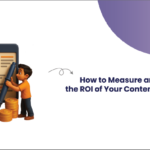

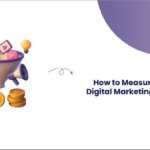
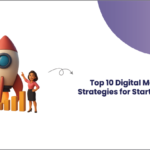
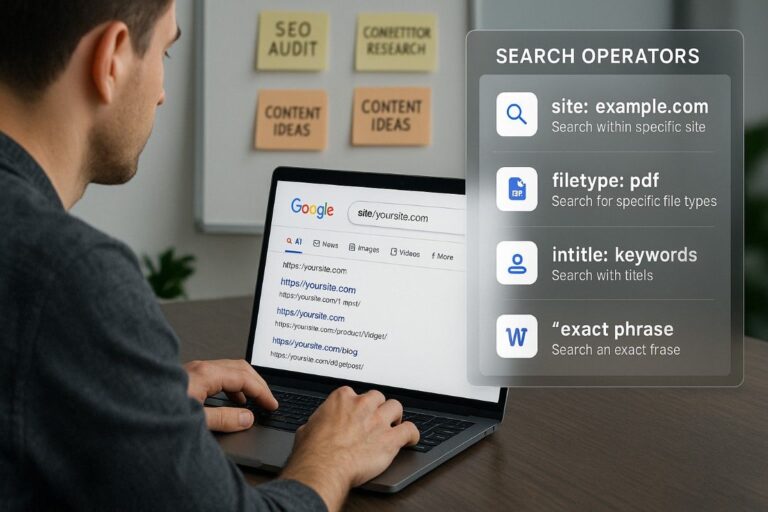
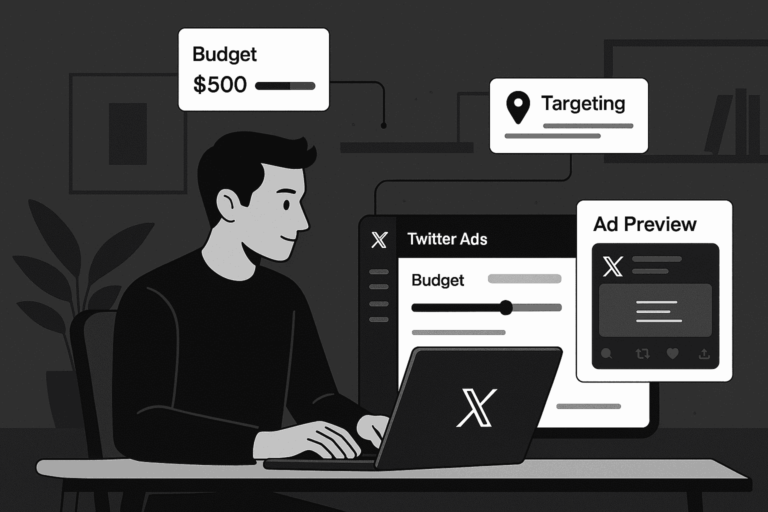
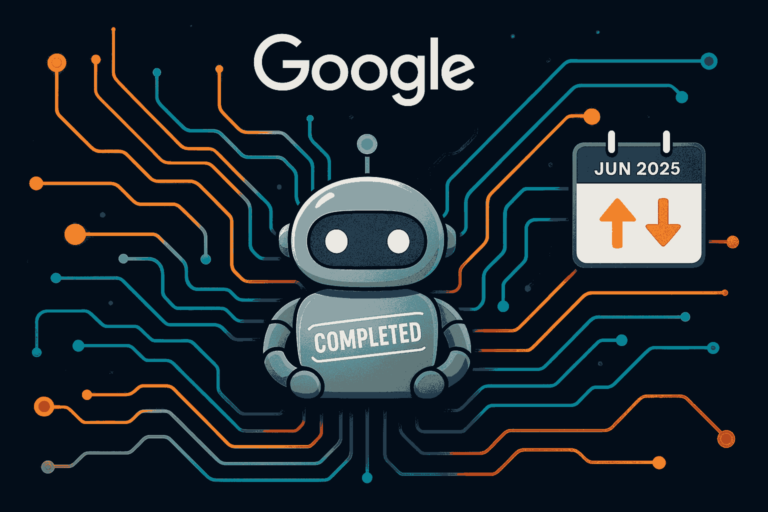
Leave a Comment
Surya Prakash
Hi, I’m Surya Prakash — a digital marketing strategist and founder of SalesNanny. I help startups and digital-first brands grow online using a mix of SEO, AEO, content marketing, and brand storytelling. At SalesNanny, I lead strategy across organic marketing, branding, and sales funnels, blending data and creativity to build results-driven systems. I believe in sustainable growth — not hacks — and focus on content that truly helps users. I stay updated with AI trends, voice search, and Google algorithm changes so our clients always stay ahead. Outside work, I explore herbal wellness and experiment with tools that simplify marketing. You can follow my blog insights here where I break down complex marketing topics into simple, useful ideas.
Comments
No comments yet. Be the first to comment!